Beijing is a magnificent place to visit. One of the world’s most exciting and interesting cities, Beijing boasts a whopping seven UNESCO World Heritage Sites. From prehistoric humans, to ancient and modern Chinese culture, the UNESCO sites in Beijing are both varied and inspiring. Read on for our guide to the seven World Heritage Sites in Beijing.
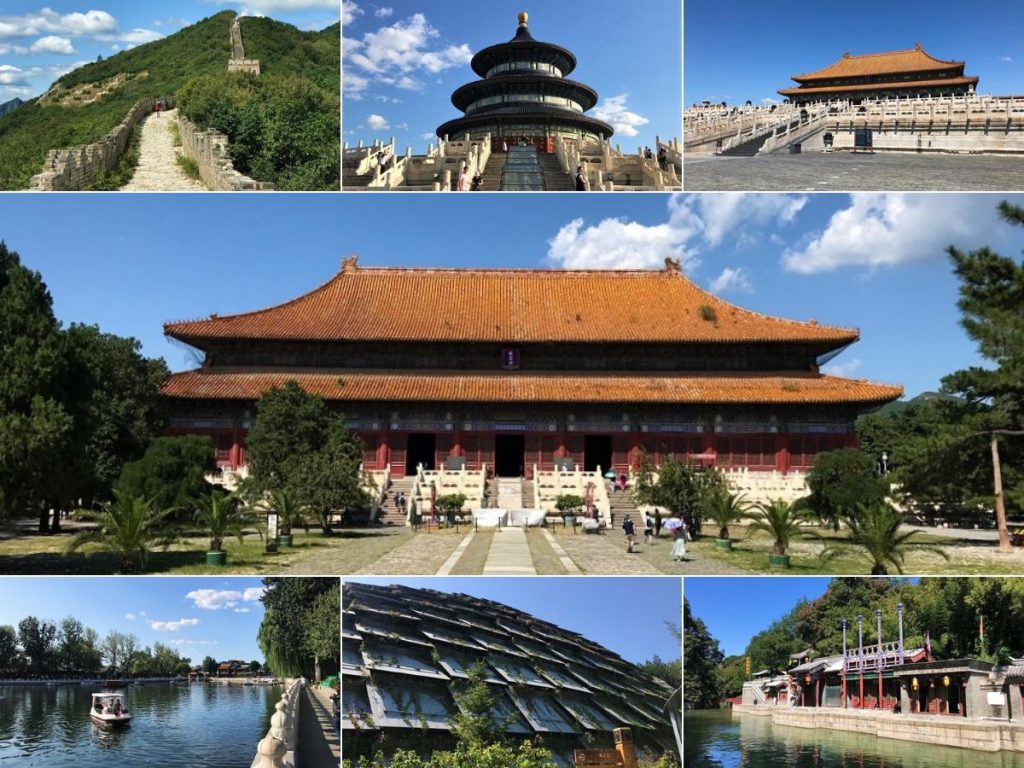
Forbidden City – World Heritage Site in Beijing
First of the World Heritage Sites in Beijing is two separate palace complexes built by the Ming and the Qing Dynasties. The incredible Forbidden City in Beijing is easily the most important of these palaces. Built by Yongle, third and greatest of the Ming Emperors, it took 15 years and a million men to construct. Yongle seized the throne in a violent palace coup in 1406, and he ordered his new palace and capital to rigidly enforce the law and social hierarchy. And although it’s now a museum, it’s still right at the heart of the centre of China.
You enter the complex through the enormous Meridian Gate. It’s just behind the Tiananmen Gate onto Tiananmen Square, with its famous portrait of Chairman Mao. Here there’s three archways, the centre one reserved for the emperor’s exclusive use. His family, ministers, and other officials all had to use separate entrances.
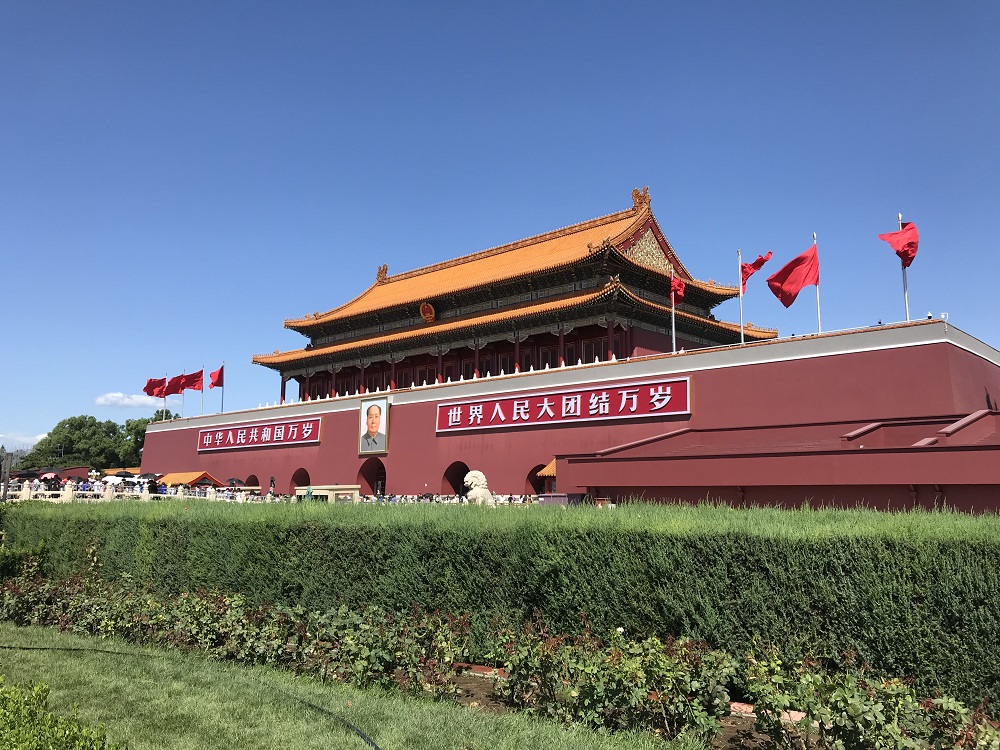
Through the Gate and inside the walls is the main palace. It’s a rectangular complex of over 180 acres and nearly a thousand buildings. The main buildings are arranged into the Outer and Inner Courts, and run in a north-south line through the centre of the complex. The Outer Court was for formal, ceremonial affairs, while the Inner Court was for day-to-day business. It’s also where the imperial family actually lived.
Inside the Meridian Gate is a large square with a winding artificial river, overlooked by the Gate of Supreme Harmony. Entering this gate, you’ll see the Hall of Supreme Harmony. This hall is at the heart of the whole complex, and the seat of imperial power. It’s where the emperor would receive dignitaries and hold court. Fittingly, it’s the largest building in the palace.
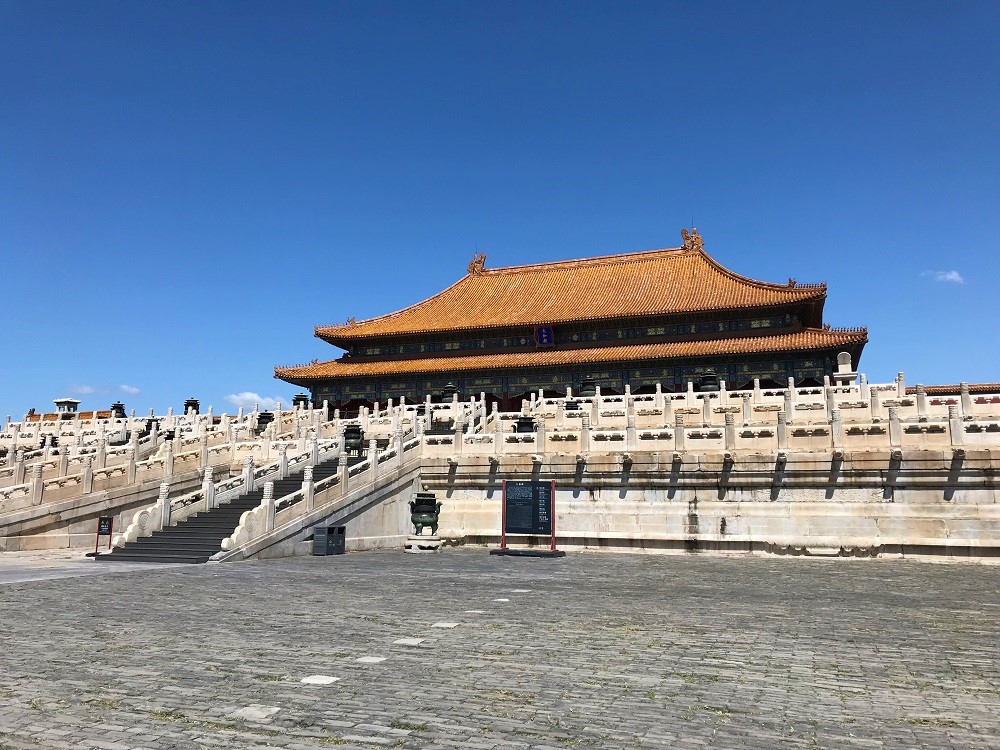
Nearby you’ll also find the Hall of Central Harmony, and the Hall of Preserving Harmony. These are the other important buildings of the Outer Court. Delicate paintings and impressive stone relief carvings cover both of these buildings. Highlights of the Inner Court are the Palace of Heavenly Purity, the Hall of Union, and the Palace of Earthly Tranquility. Although smaller, these buildings are just as detailed in their decoration and artwork. And of course, golden tiles cover the roofs of all buildings in the complex, signifying the majesty of the emperor.
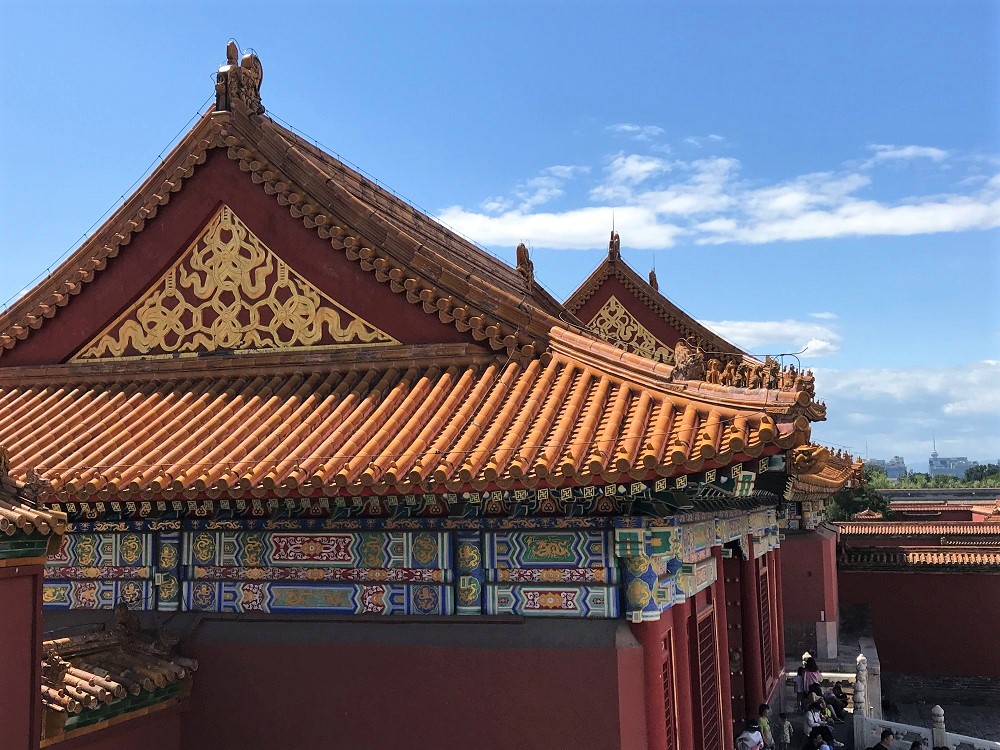
Overall, it’s a fantastic and impressive palace, one of the true highlights of China. Exploring the palace compound is a real treat, showing you how the Ming and Qing dynasties ruled China for over 500 years. And to answer the obvious question – why is it called the Forbidden City? Simple! It’s the size of a small city, and literally everyone was forbidden from entering or leaving without express permission from the emperor.
Temple of Heaven, Beijing – World Heritage Site
Second of the World Heritage Sites in Beijing is an important religious complex located in the city’s south-east. It was built in 1420, and is another of the projects built by the greatest Ming emperor, Yongle. The UNESCO site here consists of two religious temples, an altar, and several other buildings in a large forested compound.
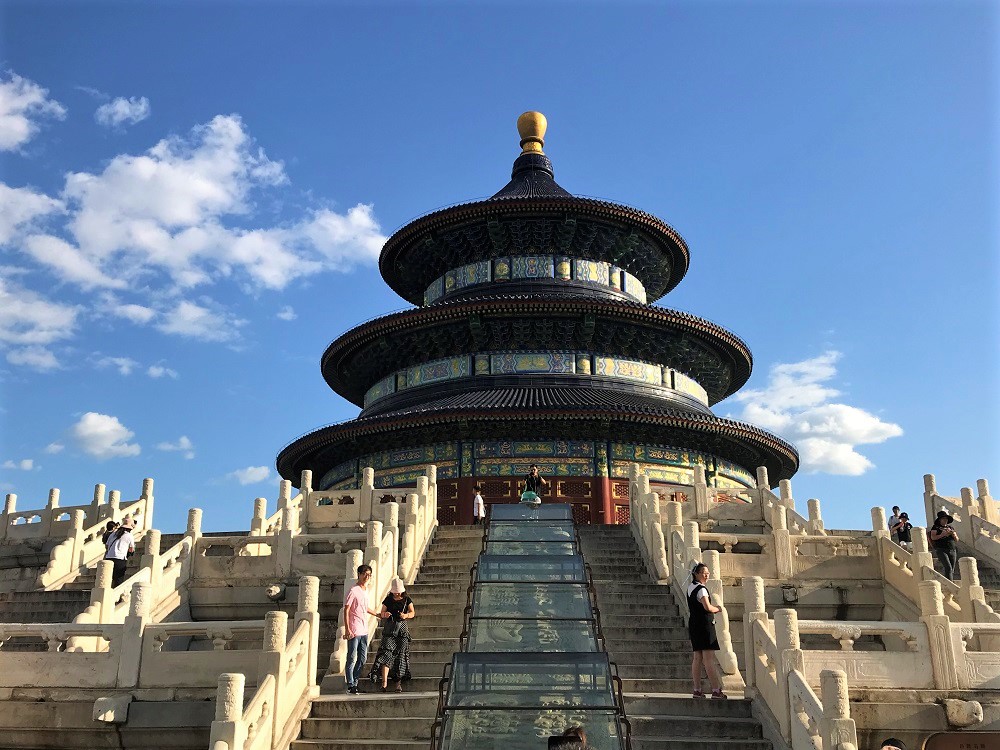
The most impressive building here is the Hall of Prayers for Abundant Harvests. The Hall is a three-tiered circular structure, built from wood and marble and topped with gorgeous blue roof tiles. Here, the emperor would visit each year on an auspicious date, performing an elaborate ritual to pray for good harvests. The omens would be very bad if every step wasn’t performed perfectly. Sometimes, the ritual even involved the Emperor personally plowing a field kept nearby for that specific purpose.
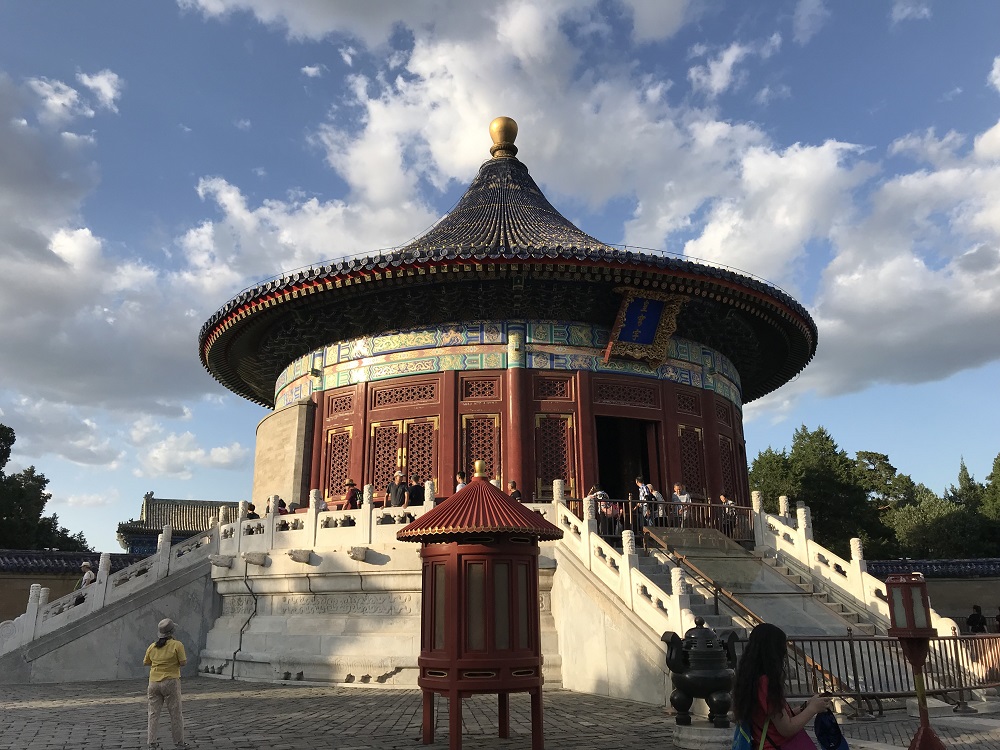
South of the Hall of Prayers is the Imperial Vault of Heaven. The Vault is built in the same circular style as the Hall of Prayers, but to a smaller scale. Here, the emperor would fast and make offerings to the gods before starting the main rituals.
Finally at the southern end is the intricately carved Altar of Heaven, a three tiered altar built from white marble. For rituals, the imperial throne was placed precisely in the centre of the Altar. It showed the emperor as the Son of Heaven, wielding the Mandate of Heaven, linking the gods and the earth.
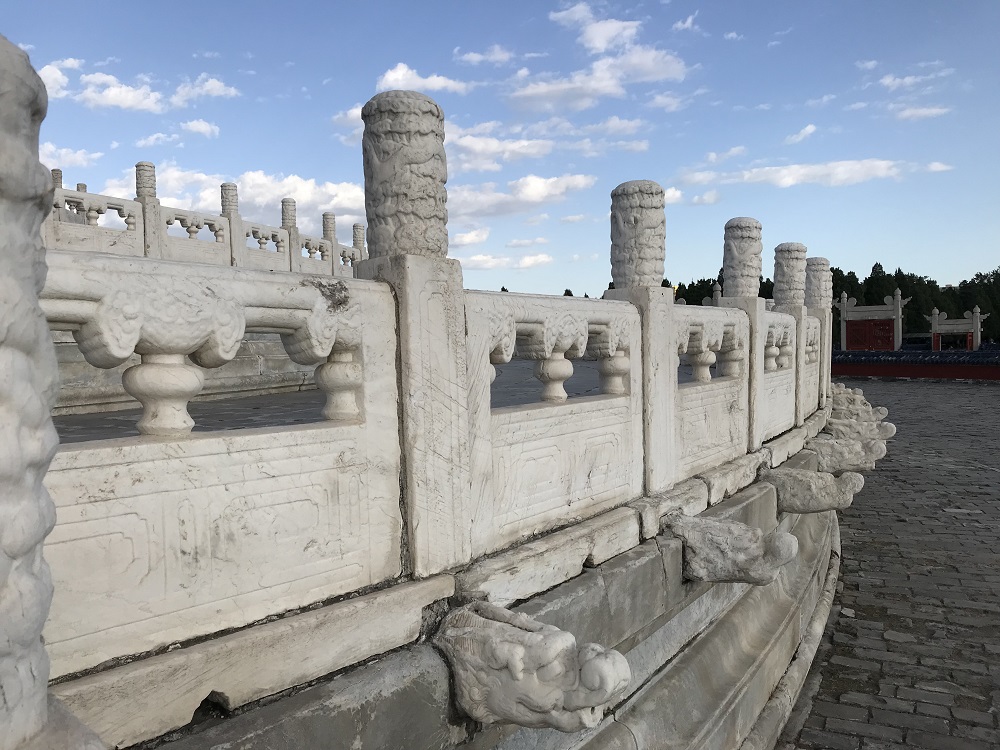
Lavish decorations and complex symbolism cover all the buildings in the temple complex. Everything references the ancient Chinese belief that Heaven is round and the Earth square. Finding where squares and circles overlap such as circular buildings on square platforms can be quite rewarding.
The temple complex has been a museum and public park for a century, since the Qing dynasty collapsed. The nearby forests and parklands also make the Temple area a beautiful part of Beijing to visit.
The Summer Palace – World Heritage Site in Beijing
Next of our World Heritage Sites in Beijing is the Summer Palace, a former royal residence on the city’s outskirts. As the name suggests, it was used by Emperors as their summer retreat away from the noise and heat of the city. Constructed largely in the 18th century, the complex is centred on the artificial Kunming Lake, and Longevity Hill.
And it’s absolutely enormous. The Lake is about three square kilometres, while Longevity Hill is 60 metres high. Buildings, pavilions, temples and other places of interest dot the landscape. The most dominating feature takes pride of place on the hill: the Tower of Buddhist Incense. Modelled after Wuhan’s Yellow Crane Tower, the three-tiered tower stands 41 metres tall. Here the emperors and empresses could pray and make offerings to the gods.
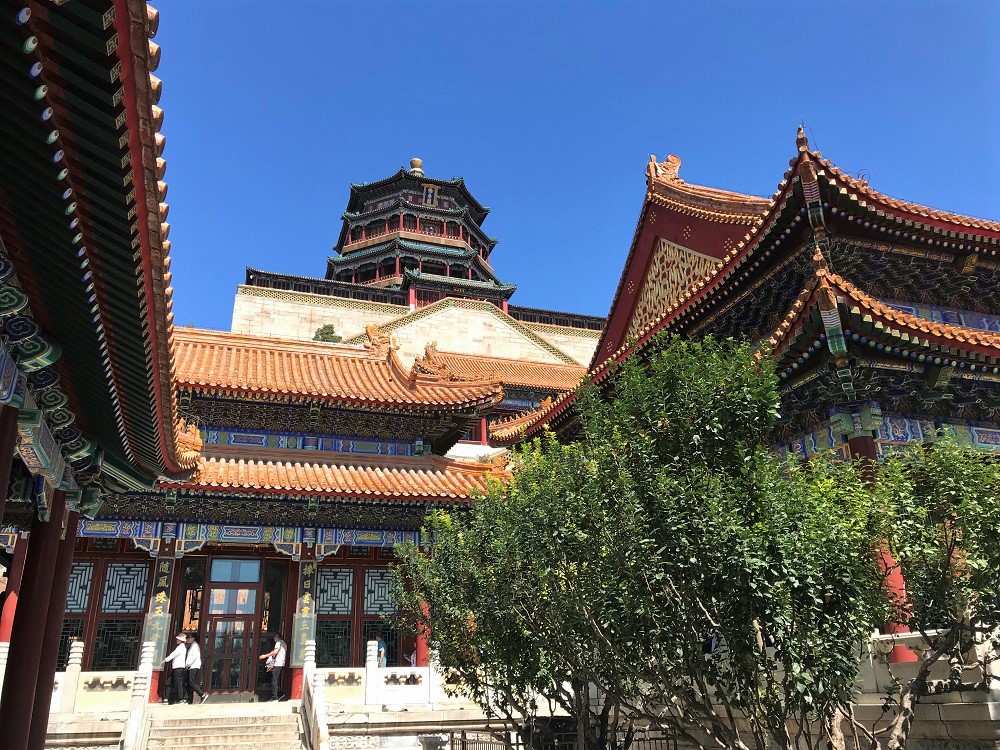
Just below the tower is the beautiful Hall of Dispelling Clouds. This was built as a gift for Emperor Qianlong’s mother, and was later used as a reception hall for foreign dignitaries. Nearby is the Gate of Dispelling Clouds, which connects the Hall to the front of the lake.
On the lake’s edge is the remarkable Long Gallery. This incredible structure is a long outdoor corridor. It runs along the lake shore for the the entire length of the palace – an incredible 728 metres. The Gallery was built so members of the imperial family could move about in any weather: rain, hail, or shine. There’s several pavilions dotted along the corridor, and it’s brightly coloured with decorations as well.
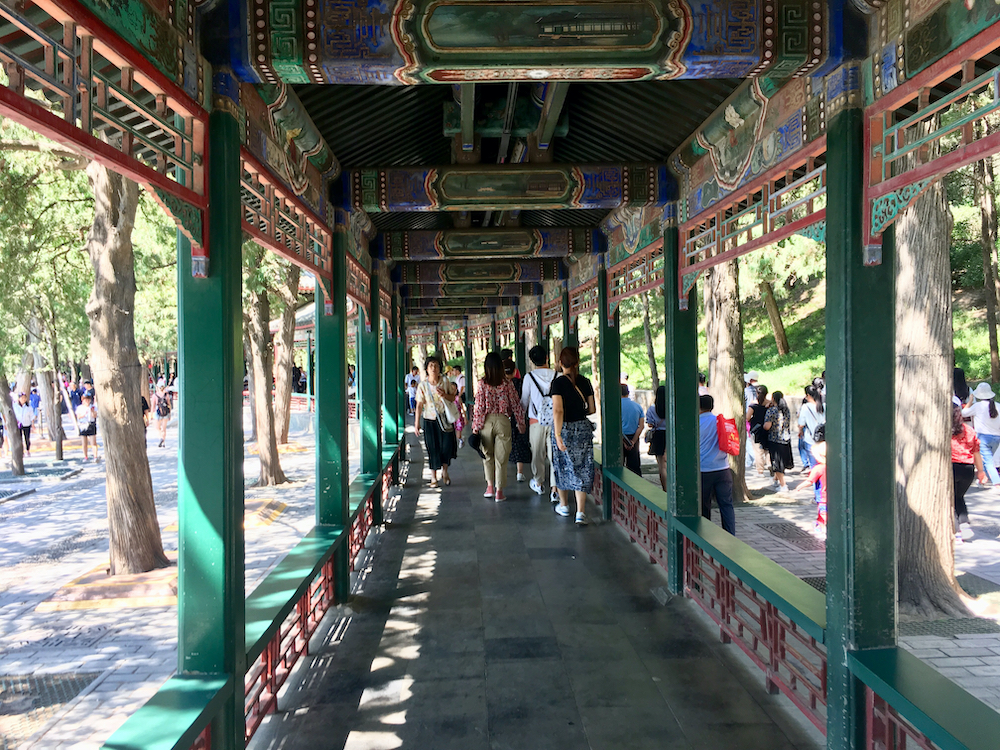
Nearby there’s the strange Marble Boat which is exactly what it sounds like: a boat, made of marble. Built in the 1890s by Empress Dowager Cixi, it has a distinctly Western style to it. And no, it obviously can’t sail anywhere!
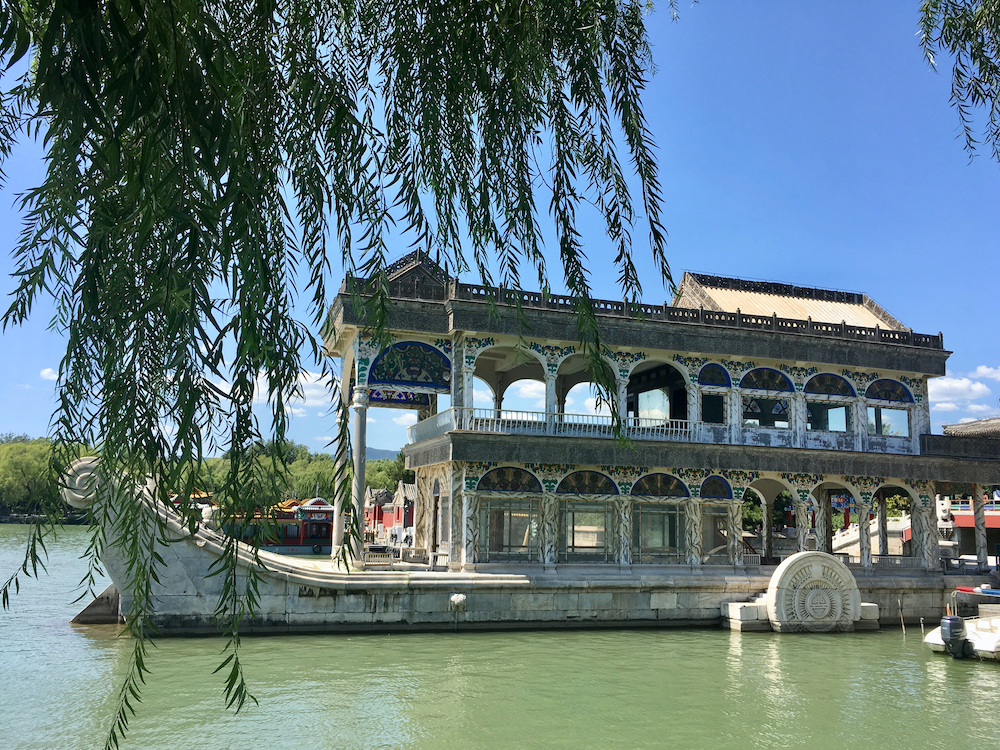
Finally, at the back of the palace was probably our favourite feature: Suzhou Street. This is a large canal area lined with shops, in a Disney-style imitation of Suzhou, near Shanghai in eastern China. It was built in the 18th century so the royal family could stroll “normal” streets and go shopping just like common folk. It’s a lovely spot, despite such an odd backstory.
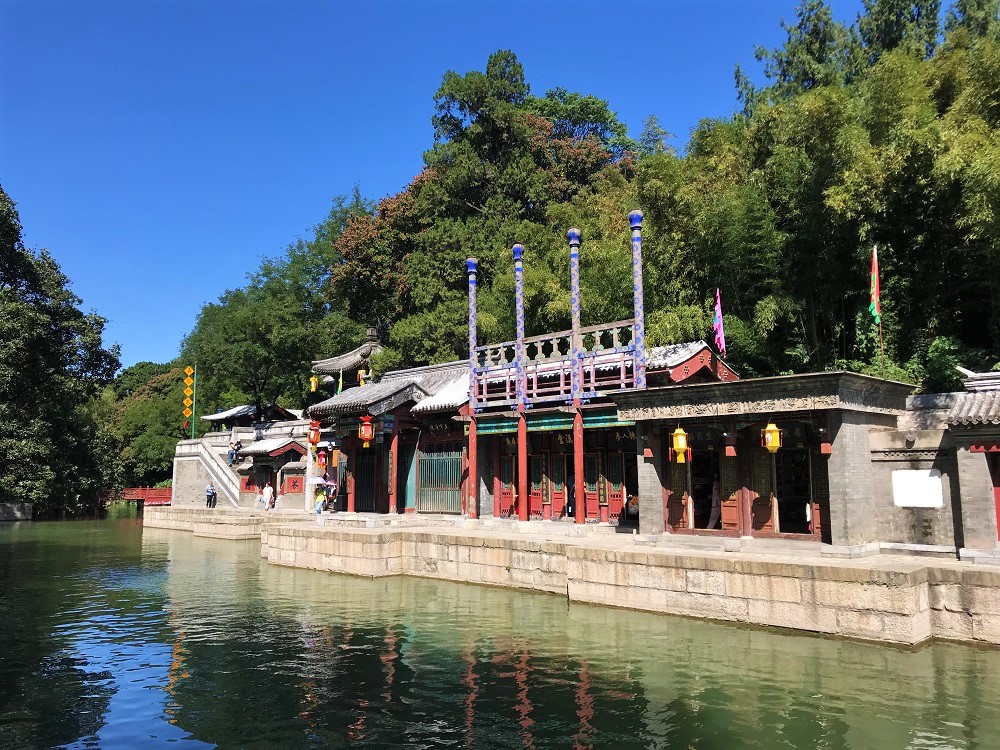
All up, we really enjoyed the Summer Palace. British and French troops burned much of the Palace in 1860 (which the signs and brochures mention repeatedly!). But the Palace was reconstructed at great expense in the 1890s by Empress Dowager Cixi. It’s said that the cost of rebuilding the Palace ultimately contributed to the Qing dynasty’s ultimate collapse a few years later. That’s quite a legacy!
The Great Wall – World Heritage Site
The Great Wall of China is among the most famous World Heritage Sites on the entire planet. It stretches an incredible 22,000 kilometres across northern China, and parts of the Wall have existed since around 500 BC. The full World Heritage entry covers most of the wall, but we visted the Mutianyu section. It’s in great condition, easily accessible, and one of the most impressive World Heritage Sites in Beijing.
Despite the Wall’s fame, our knowledge of it was very incomplete or just plain wrong. For starters, it’s definitely not a single wall running the entire length of China. It’s actually a system of defensive barriers in many different places. Some of the earliest parts of the wall are from pre-imperial China, and mark out the borders of long-disappeared kingdoms.
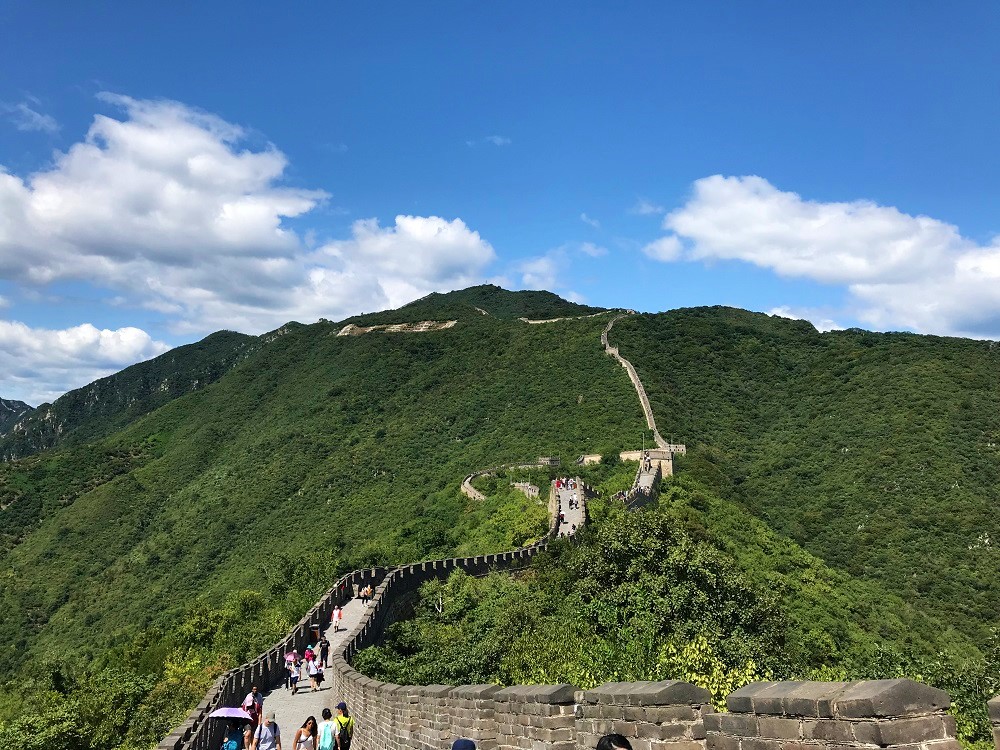
Next, the stone walls pictured only make up certain sections of the wall, like Mutianyu. Large areas are just earthworks like dikes, mounds and trenches, and in some places it just uses natural river barriers. The Mutianyu section was largely built during the early Ming dynasty in the 15th century. Our friend Yongle, third and greatest of the Ming emperors, massively strengthened this area of the wall. He had recently moved his capital to Beijing, and wanted to secure his new empire from Mongol invasions.
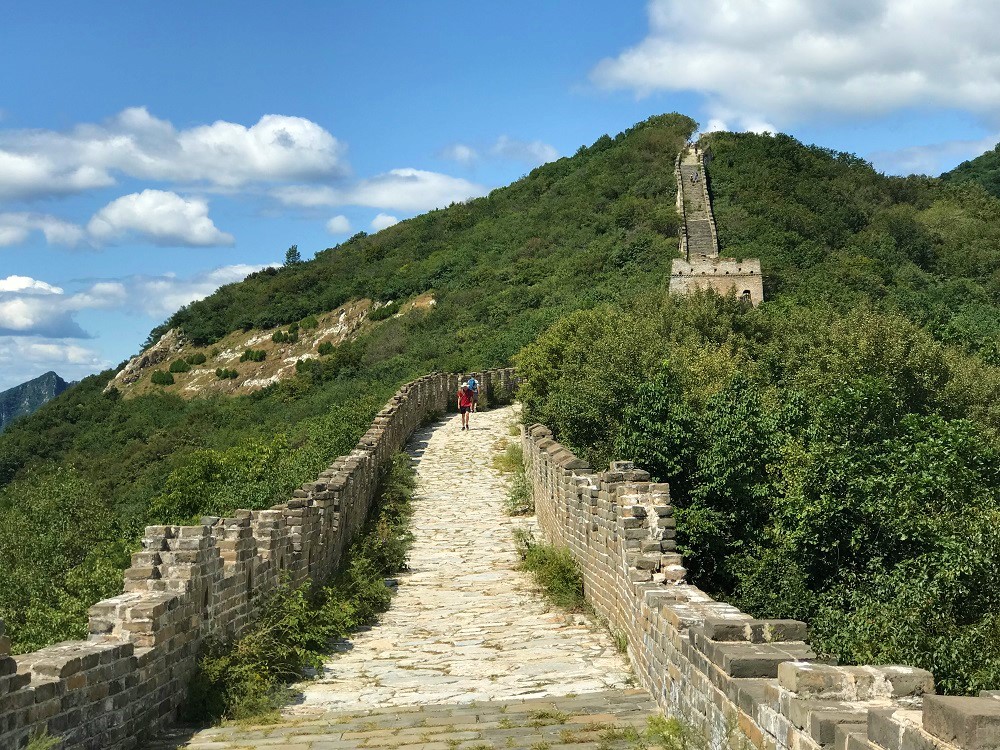
But the wall served purposes other than defence. In addition to controlling entry, it also controlled who could leave, lowering the influence of foreign powers. It controlled trade, allowing for easier collection of taxes and excise. It provided easy transportation for armies along the frontiers. And signal beacons built into the watchtowers allowed for long-range communication.
The section we visited at Mutianyu is in excellent condition thanks to modern restoration work. However, large parts of the wall are in disrepair, if not outright ruin. After the fall of the Ming in 1644, the new Qing dynasty took the throne. The Qing are from Manchuria in north-east China, beyond the Wall. Unsurprisingly, they had little interest in keeping their homelands walled off.
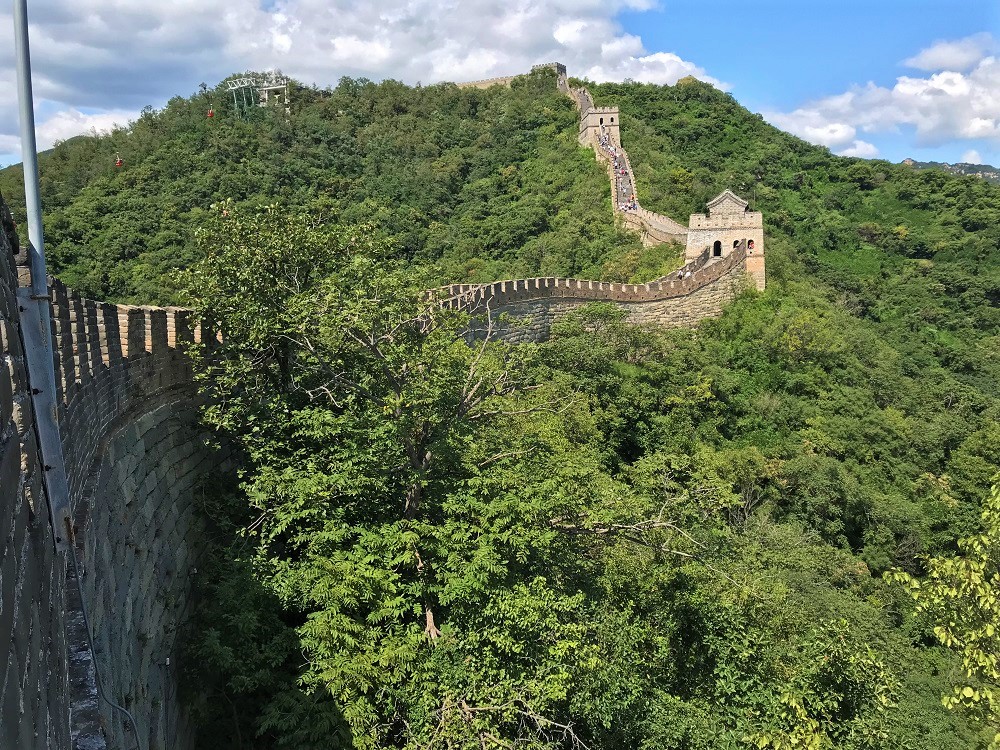
And finally – can you see the Great Wall from space? Well, yes and no. Apparently it’s visible from very low orbit like on the International Space Station, but it isn’t any more noticeable than any other man-made structures. From higher orbits – sadly not.
Imperial Tombs of the Ming & Qing Dynasties – World Heritage Site
Between them, the Ming and the Qing Dynasties ruled China for 500 years. They ruled from the late 14th century right through until 1912. As you’d expect, the emperors of these dynasties constructed large and elaborate tombs. For our visit to this World Heritage Site in Beijing, we focused on the most important: the early Ming tombs west of the city. Here you find a lush, rolling valley, home to 13 tombs of Ming emperors.
Approaching the site, you follow the Sacred Way, a long tree-lined boulevard of several kilometres lined with statues. Elephants, camels, and dragons protect and bless the sacred valley, while a series of imperial ministers and generals stand guard for their departed masters.
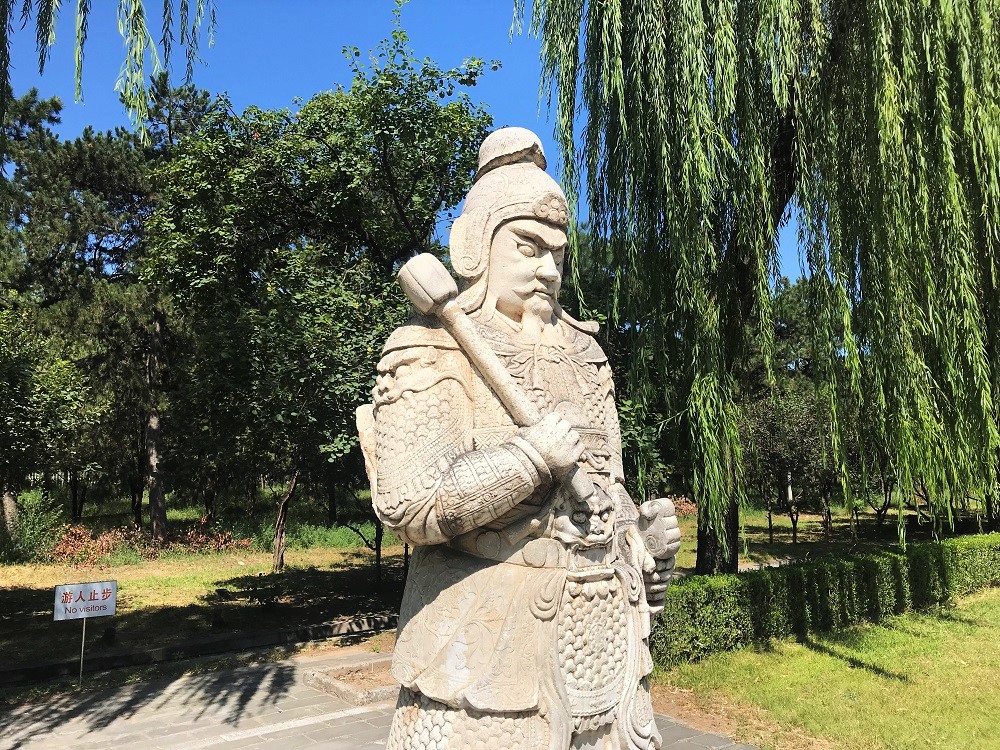
Proceeding into the valley itself, we first stopped at Dingling Tomb. This is the burial place of the Wanli Emperor, along with his empress after their deaths in 1620. The complex is quite large, with a series of gradually rising pavilions, courtyards and gatehouses. The tomb itself is buried under a large conical mound of earth, covered in grass and trees. Descending deep underground into the actual burial chamber, there’s actually not anything to see other than some replica coffins. The place is entirely bare, and feels a bit like a bank vault, for reasons I’ll explain below.
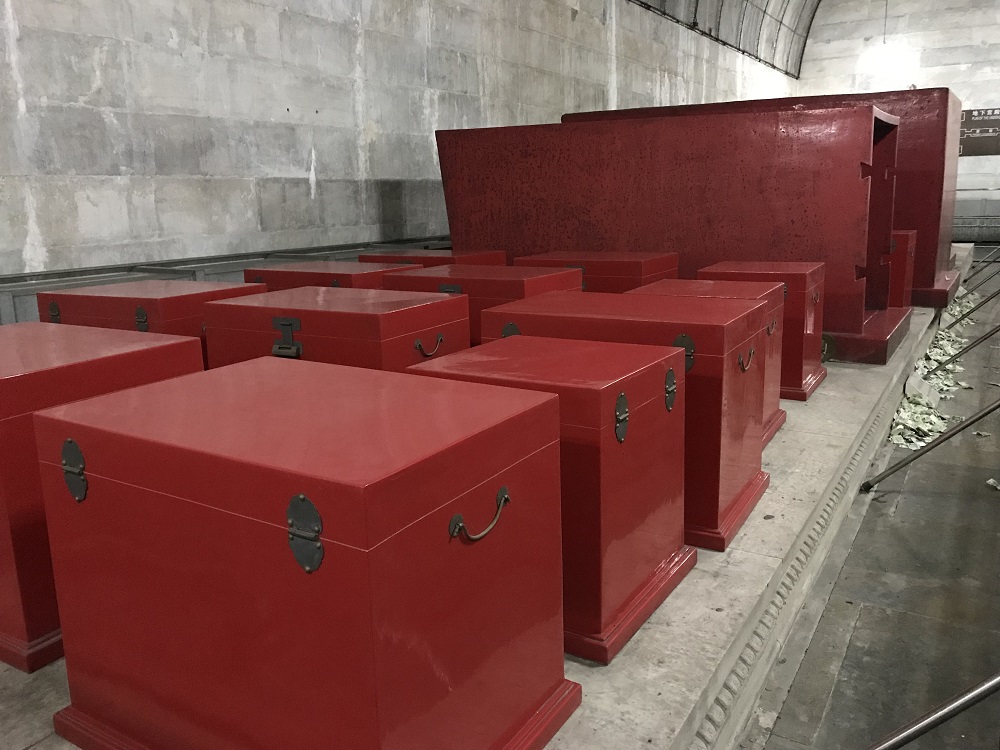
Our final stop for this UNESCO site was the Changling Tomb. Changling is the resting place of Yongle, greatest of the Ming emperors. We’ve already encountered Yongle’s legacy several times in China, and his tomb is as grand as his accomplishments. His tomb is a colossal series of halls, pavilions, gates, courtyards, and statues. And of course the large earthen mound containing the burial vault.
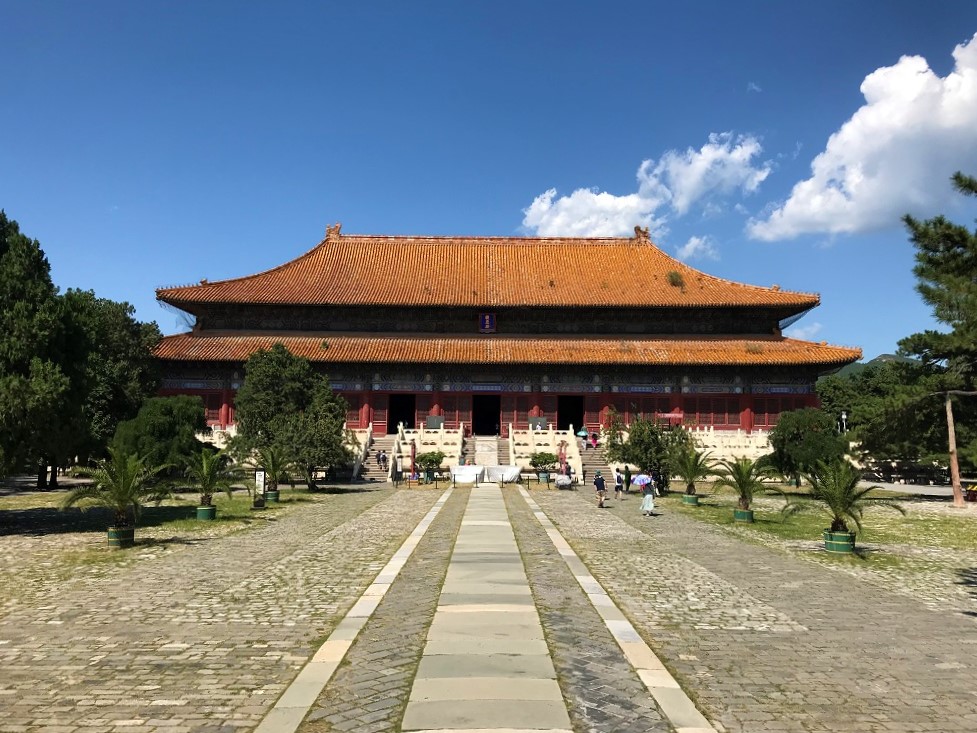
But surprisingly, Yongle’s tomb has never been opened. In fact, of all of the tombs, Dingling is the only one that has been opened. Despite the wonders and treasures that must lie within, Dingling is a cautionary tale. The excavations were done poorly, and many items were badly damaged by the process. But even worse, Mao’s Cultural Revolution swept across China during the excavation, and most treasures were burned, smashed, and denounced. Only a small number of items survived, smuggled out of the country. After the trauma of this destruction, authorities decided the other tombs (including Changling) would remain forever unexcavated.
Peking Man Site – World Heritage Site in Beijing
Next in our tour of the World Heritage Sites of Beijing is the Peking Man site at Zhoukoudian. Located an hour southwest of central Beijing, Zhoukoudian is one of the most important spots in world archaeology. Here, in 1921, Swedish and Chinese archaeologists uncovered teeth, jawbones, skullcaps and tools belonging to what was an unknown species.
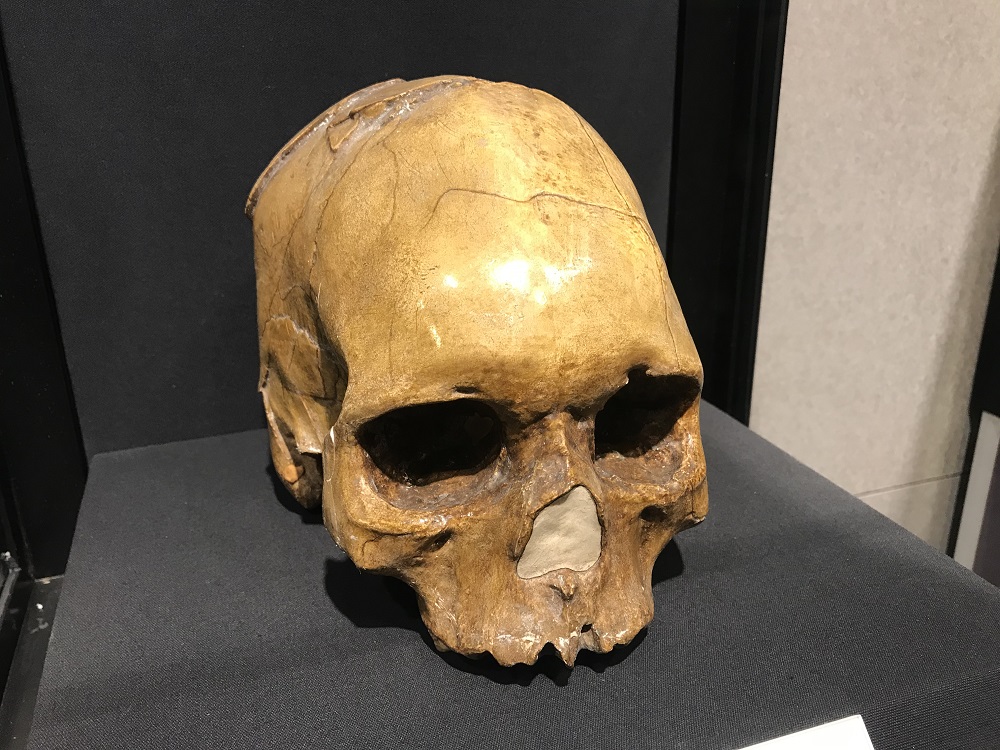
Initially described as Australopithecus pekinensis, or Peking Man, the remains were eventually classified as belonging to Homo erectus. Homo erectus is the final precursor species before Homo sapiens, or modern humans. Found in a series of caves, the ages of the fossils are still disputed but estimated at about 500,000 years old.
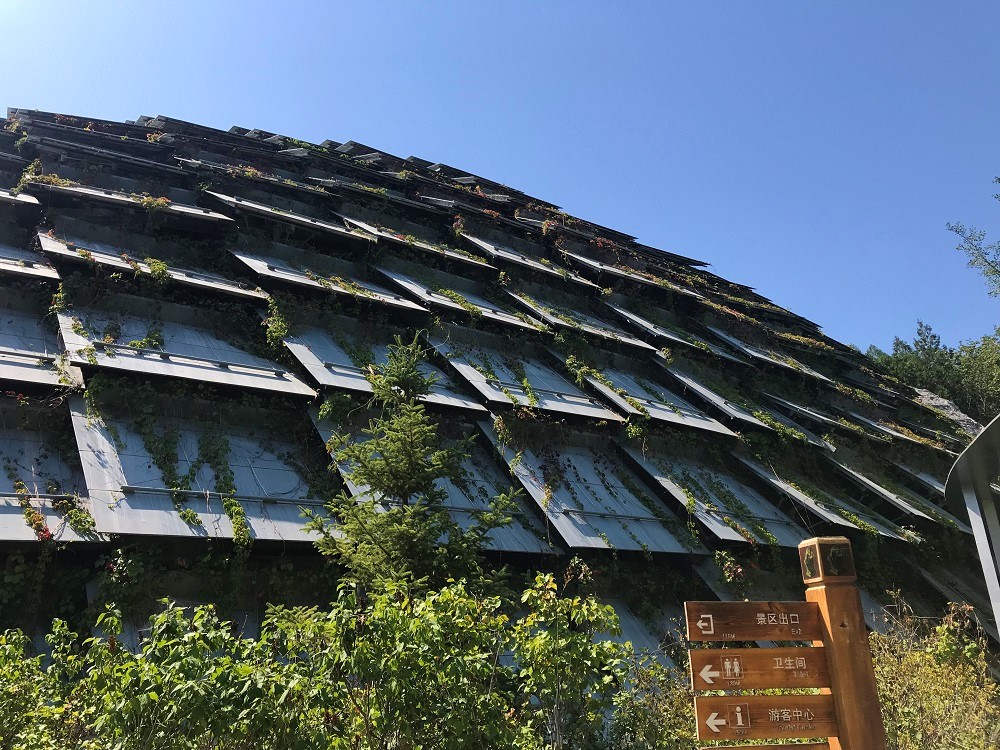
There’s a large and well-organised museum here, which makes it far more interesting than other early human sites we’ve seen. The Chinese and English descriptions of each pit are very clear, and give an excellent sense of what you’re looking at. Unfortunately, the actual fossils uncovered haven’t survived through to the present day. Japanese soldiers looted the bones during World War Two, which sadly disappeared during repatriation back to China after the war.
The Grand Canal – World Heritage Site
The Grand Canal is one of the world’s most incredible engineering feats. Both the world’s longest and oldest canal, it stretches an incredible 1776 kilometres from Beijing in the north to Hangzhou in the south. It connects China’s two most important rivers: the Yellow, and the Yangtze. Parts of the canal date back to 500BC, but much of the canal is newer than that. The Ming Dynasty, particularly Emperor Yongle, built large sections of the canal in the 15th century AD.
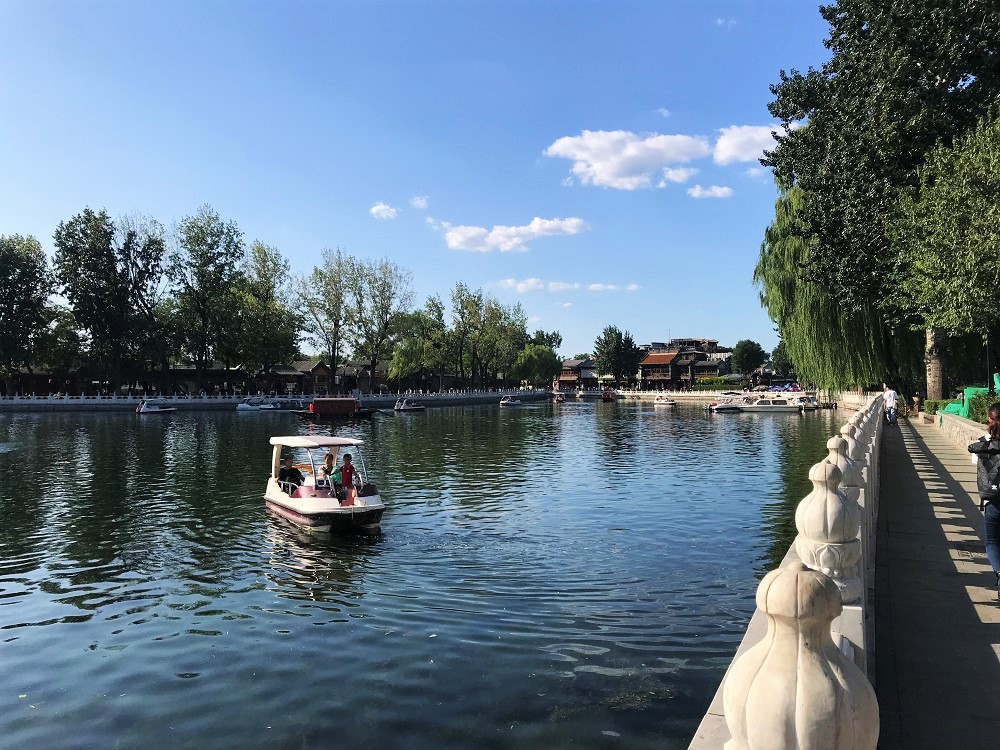
In Beijing, the canal ends at the beautiful scenic spot of Lake Houhai. You’ll find picturesque boats, arched bridges and lovely willow trees dangling over the water. It’s all very peaceful and relaxed here! It’s very different from the busy southern areas that are crowded with barges and other traffic.
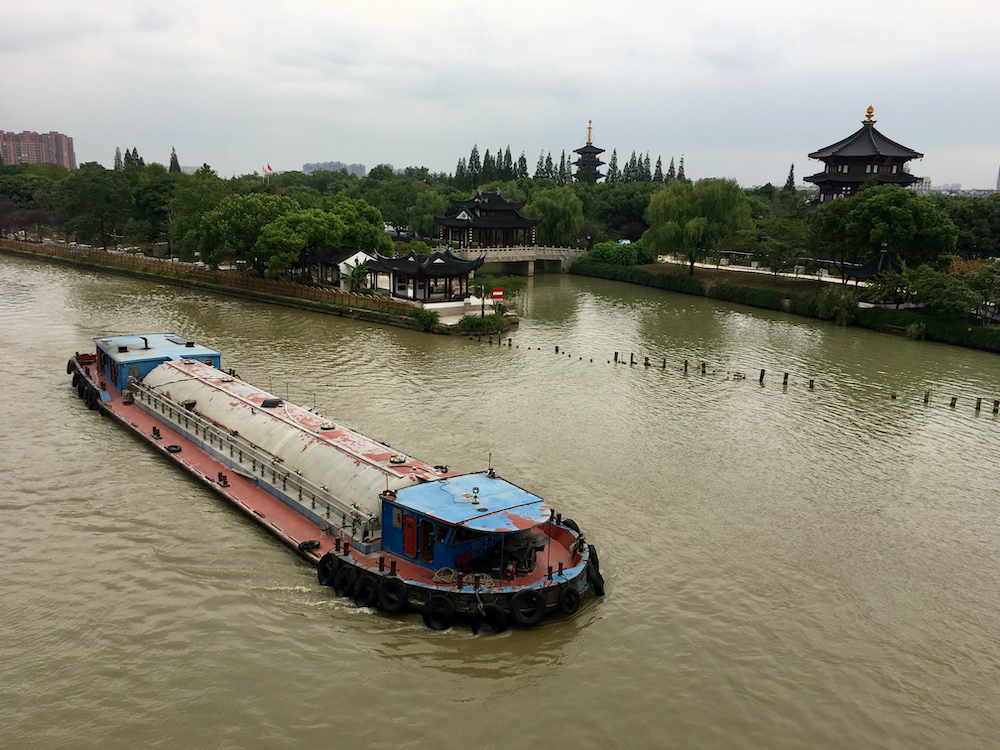
Although not in Beijing, we also visited the southern end of the Grand Canal in Suzhou, not far from Shanghai. It’s very different here, with wide shipping lanes and lots of barges. And it really impresses on you what a feat of engineering the Canal is. It connects northern and southern China. The rice areas and the wheat areas. It moved troops around, plus the important trade goods we associate with China, like spices, silks and porcelain. I honestly think modern China probably wouldn’t exist without the Grand Canal. Truly, a staggering thought.
Conclusion
Beijing is an incredible city, full of life, culture and history, and we hope you enjoyed this tour of the World Heritage Sites in Beijing. Elsewhere in China, you’ll find one of the most impressive UNESCO World Heritage Gardens. Happy travels!
